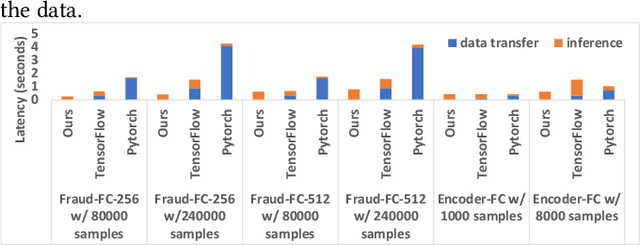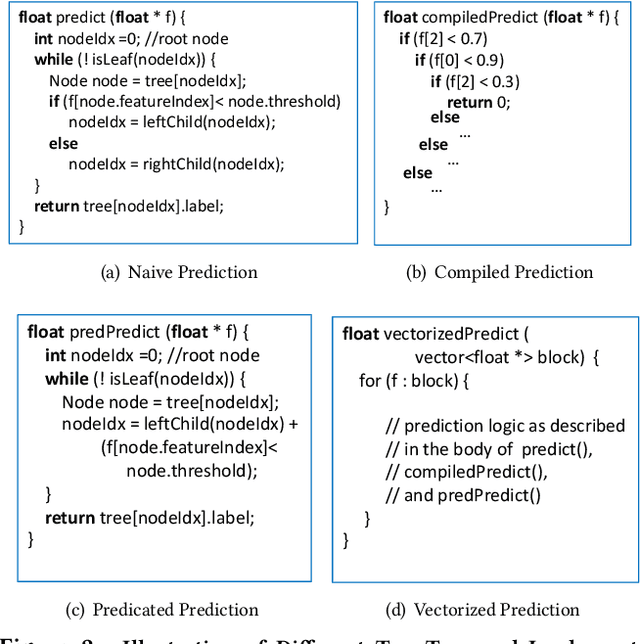Hong Min
Serving Deep Learning Model in Relational Databases
Oct 10, 2023



Abstract:Serving deep learning (DL) models on relational data has become a critical requirement across diverse commercial and scientific domains, sparking growing interest recently. In this visionary paper, we embark on a comprehensive exploration of representative architectures to address the requirement. We highlight three pivotal paradigms: The state-of-the-artDL-Centricarchitecture offloadsDL computations to dedicated DL frameworks. The potential UDF-Centric architecture encapsulates one or more tensor computations into User Defined Functions (UDFs) within the database system. The potentialRelation-Centricarchitecture aims to represent a large-scale tensor computation through relational operators. While each of these architectures demonstrates promise in specific use scenarios, we identify urgent requirements for seamless integration of these architectures and the middle ground between these architectures. We delve into the gaps that impede the integration and explore innovative strategies to close them. We present a pathway to establish a novel database system for enabling a broad class of data-intensive DL inference applications.
A Comparison of Decision Forest Inference Platforms from A Database Perspective
Feb 09, 2023



Abstract:Decision forest, including RandomForest, XGBoost, and LightGBM, is one of the most popular machine learning techniques used in many industrial scenarios, such as credit card fraud detection, ranking, and business intelligence. Because the inference process is usually performance-critical, a number of frameworks were developed and dedicated for decision forest inference, such as ONNX, TreeLite from Amazon, TensorFlow Decision Forest from Google, HummingBird from Microsoft, Nvidia FIL, and lleaves. However, these frameworks are all decoupled with data management frameworks. It is unclear whether in-database inference will improve the overall performance. In addition, these frameworks used different algorithms, optimization techniques, and parallelism models. It is unclear how these implementations will affect the overall performance and how to make design decisions for an in-database inference framework. In this work, we investigated the above questions by comprehensively comparing the end-to-end performance of the aforementioned inference frameworks and netsDB, an in-database inference framework we implemented. Through this study, we identified that netsDB is best suited for handling small-scale models on large-scale datasets and all-scale models on small-scale datasets, for which it achieved up to hundreds of times of speedup. In addition, the relation-centric representation we proposed significantly improved netsDB's performance in handling large-scale models, while the model reuse optimization we proposed further improved netsDB's performance in handling small-scale datasets.
 Add to Chrome
Add to Chrome Add to Firefox
Add to Firefox Add to Edge
Add to Edge